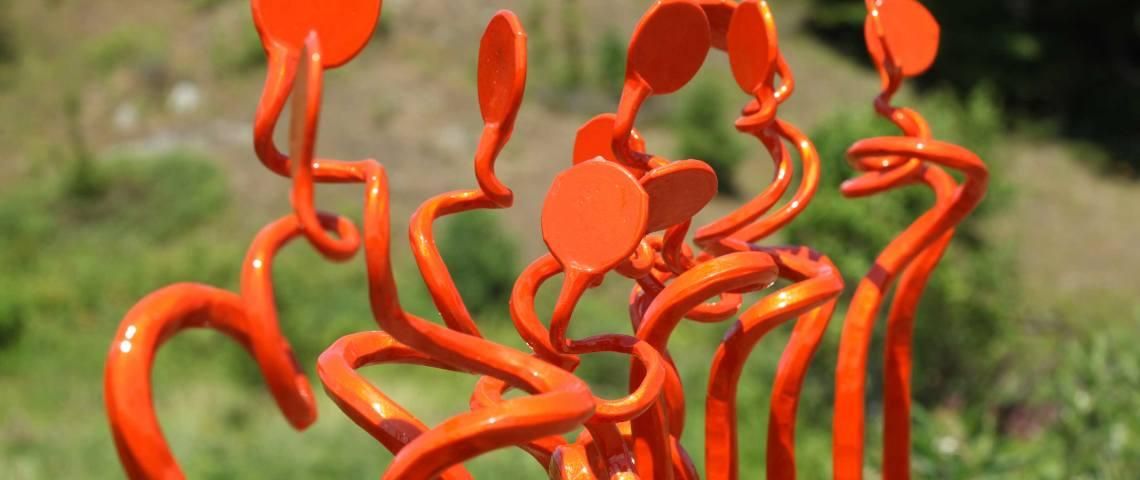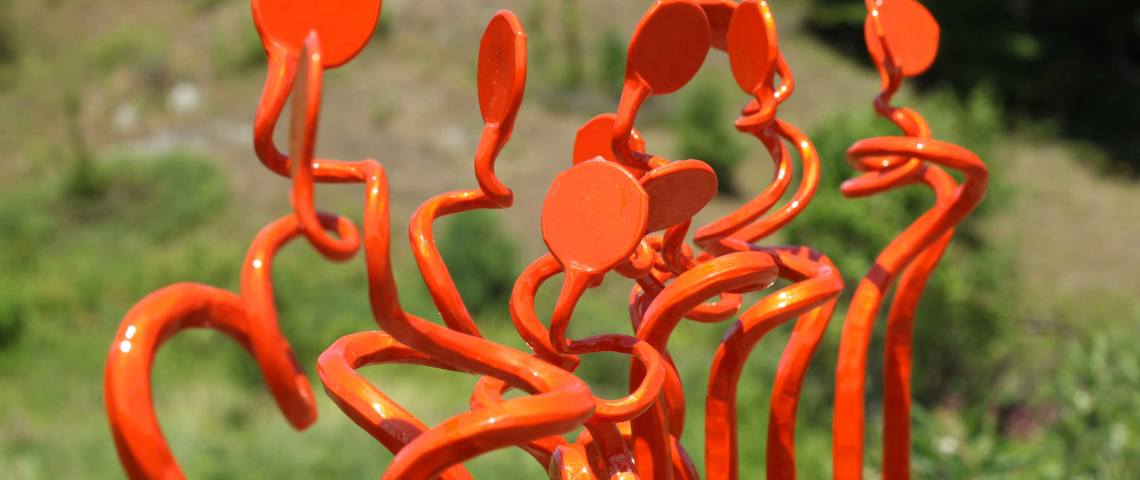Last summer we paid a visit to Stefan Duerst’s home, workshop and outdoor exhibition space near Godfrey, just north of Kingston, as part of a feature on local sculpture parks. Fascinated with what I saw, I vowed to pay a return visit.
Opening the discussion, we talk about the origins of artists as a distinct entity, and how originally they emerged from the system of medieval guilds in Europe. Members of those guilds were not necessarily divided into ‘artists’ or ‘craftsmen.’ That encouraged discussion of the distinction between art and craft and the point at which craft becomes art, if it ever does. Debating whether the status of art is more likely to be conferred on objects, the more useless they become, I propose an analogy with motor vehicles. Sports cars are perceived to have higher status than minivans, yet clearly the latter have greater people carrying capacity: they are more practical, but have less status. So the question is, does practicality preclude artistry? Is that how craft transcends into art, effectively by becoming less purposeful? If so, does that lead to the curious position that art becomes art, the more useless it is? Stefan confides to being perplexed about how the art world actually works.
Why does any of this matter? We are discussing this because Stefan feels the credibility of his identity as an artist and sculptor is compromised by his supreme level of technical ability, achieved by his six years of training to acquire the practical skills of a blacksmith.
Under the tutelage of Herbert Elflein, Stefan studied many different styles of metal work. “In these years, I gained knowledge of traditional and historical metalwork styles such as Gothic, Renaissance, Baroque, Rococo, Art Nouveau, and especially modern metalwork.”
“But I feel, had I been a pizza delivery guy or a realtor, and not a ‘blacksmith,’ my day job would not negatively impact the perception of my artworks?” In Stefan’s case this is a particularly supreme irony, as ideas and inspiration for the sculptures flow out of the practical assignments he undertakes, like constructing art nouveau gates. And the ribbon like shapes he tends to produce are actually inspired by rococo wrought iron. Effectively, Stefan is to be identified both as an artist and a craftsman, depending on which field of activity he operates. If an artist paints a wall, is he or she still an artist? Can one be both artist and crafts person…in this case emphatically, yes. We might also ask, is an artist only an artist when in their studio, or is an artist still an artist, even when attending to domestic responsibilities.
Stefan admits, “To not being a conceptual artist, I manipulate metal into cool abstract shapes and flowing lines often inspired by art nouveau, hoping for a few brief moments to wow people out of their everyday concerns, with some sort of beauty.”
His first show in Munich featured handcrafted and welded pieces. He then started to implement hot formed elements, as well as embracing performance art.
“Working with fire and steel has become a form of meditation for me. While creating my hot formed metal sculptures, I have to focus on the process as the steel only holds heat for a very short time.”
Stefan focuses on capturing energy in motion, creating a frozen moment in time, in German an ‘Augenblick.” Flowing lines exemplify natural elements of motion like those found in water, wind, earth and fire. These elements are necessary in creating the work. Immersion in the process manifests a transformative, almost alchemical energy. “My time-sensitive approach, guides my inspiration spontaneously and intuitively and directs decisions about form, lines and spacial relationships.”
I am fascinated by the machinery populating the work shop and the very obvious relationship between the machinery and the work. Some pieces are exquisite and fragile, like filigree or a metallic spider’s web almost as fine as wire, which virtually disappear when seen from one angle, and then re-materialize when viewed from a different point of view. Other pieces flow like cascading metal moments as delicate and graceful as ossified origami. Stefan’s works can now be purchased in any colour one might wish for. Pieces can be supplied unpainted to be powder coated locally.
Stefan’s works can be viewed in Godfrey, (by appointment) stefanduerst.com and at Studio 22 in Kingston. studio22.ca




